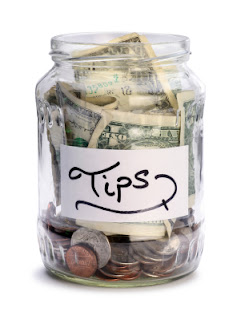People have asked why I prefer dividend stocks. Let me count the ways here,
here,
here,
and here. The reasons summarize my
preference for dividend stocks relative to alternatives. Today I’ll outline why dividend stocks in
general and div growth stocks in particular are great investments.
"The key to success [in investing] lies in avoiding
losers, not in searching for winners."
-- Howard
S. Marks
"Avoiding serious loss is a precondition for sustaining
a high compound rate of growth."
-- Roger
Lowenstein
"Rule #1: Never Lose Money; Rule #2:
Never Forget Rule #1."
-- Warren Buffett
Minimizing risks and avoiding large or frequent losses are
critical to growing my nest egg. I look
for stable firms with solid cash flow inertia.
Companies with these characteristics are less risky in my opinion.
Dividend paying stocks with long histories of payments conform
to the stable, solid cash flow, low-risk category for several reasons. Companies possessing long histories of dividend
payments are good; those with long histories of dividend growth are even
better. Here’s why…
Risk Reduction
Reducing or stopping dividend growth or payments results in
pain for shareholders and management. Management
teams work hard to avoid the market penalties levied on companies that
interrupt their dividend streams.
Because protecting the dividend stream is important it reduces the
probability the events or decisions will interrupt the stream thereby
reducing investment risk.
Firms paying dividends become relatively conservative with
their cash in order to protect the dividend stream. They can’t be too conservative because that
leads to problems as well, but they also become reluctant to take outsize chances
with their investments. Doing otherwise
courts disaster.
The net result is a measured approach when it comes to
corporate investment decisions; firms aren’t likely to throw barrels of cash at
low probability, high payout ventures. This
means dividend growers have an inherent brake preventing their investments from hurtling down the road
toward financial doom.
Cash-flow & Value Growth
Firms growing their dividend streams provide several
channels for building cash value. The
more ways a firm can build value and throw off cash, the less likely there is
for plateaus or value declines to occur.
This reduces risk.
Dividend firms do enjoy market appreciation. Granted, the appreciation for dividend firms
is generally lower than that of go-go growth firms. Then again, the downside volatility for div payers and growers can be
much less resulting in a superior
long-term advantage for the div crowd.
If I had to assess the probability of dividends being paid
out this year, next year, or in five years by a long-running div payer, I
believe the odds are generally greater those dividends will continue than are
the odds a non-div paying firm will enjoy consistent market appreciation over
similar periods. I’ll take the odds on consistent
dividend payments over sporadic up-and-down moves in the underlying stock value
every time.
This perspective is extended for dividend growth companies. If a firm has been slowly growing its
dividend each year for 25 years it’s more likely next year’s raise will occur
than a market gyration will spin the stock valuation higher. Extended over 5, 10, 15 years or more of an
investing life and the delta in probability for continued dividend growth vs
value appreciation widens.
Think of it in terms of expected payouts. If the probability of a $1,000 annual
dividend payment is 100% and the probability of $1,000 in stock doubling during
the same year is 50% the expected payouts are $1,000 x 100% = $1,000 for the
dividend and $1,000 x 50% = $500 on the strict appreciation side in year one. Extend this scenario into years 2 through n
and consider the widening gap in expected payout. Once again, the odds are with the dividend
stream vs appreciation.
Compound growth is also an important reason I prefer div
growth stocks. Compound growth can be calculated for both dividend and non-dividend payers. With a non-div stock, however, the value may
grow, but that’s it. If you start with
one share at $100 appreciating at 10% annually, you have $110 in value at the
end of the first year, but only 1 share.
Value grows but ownership claims do not.
However, if you have a dividend paying share at $100 that
doesn’t appreciate, but offers a 10% dividend, you will have $110 in value at
the end of one year and 1.1 shares in ownership claim. With a dividend payer both value and
ownership grow and compound, assuming you reinvest your dividends. Firms that increase their dividend payments
each year add frosting to this compounding advantage.
Forecasting
Last, but not least, I find it easier to measure, manage,
and forecast reasonably high probability cash flow streams from dividends than
I do the arbitrary value appreciation in the market. The ability to measure, manage, and forecast dividend
flows from a stable firm producing tangible results every quarter or month
reduces my investment risk.
I have a better chance of predicting the future cash flow
stream from a Dividend Champion over the long run than correctly guessing the
value of a firm or portfolio in a year, let alone 15. If a target is out there e.g., retirement,
college fund, etc. it helps to see it and have steady aim in order to hit it. Dividend firms offer that steady aim and
dividend growers reach the target with greater speed – both of which are
important in achieving my investment goals.







